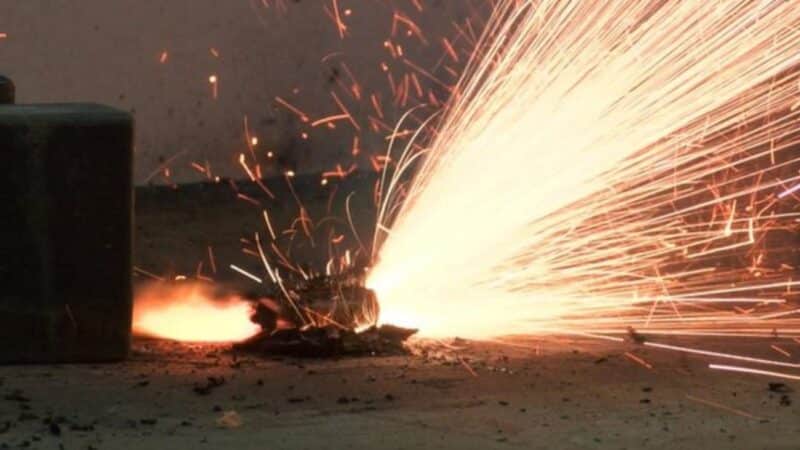
The lithium battery has provided an enormous leap forward for mankind. Smartphones, drones, long-distance electric cars, ebikes, all-day laptops, electric monowheels and skateboards – we owe them all to lithium.
They don’t go into thermal runaway and let go often, particularly if they’re well-built to tight standards and properly cared for, but there are so many now in our homes and businesses, garages, backpacks and vehicles – and so many cheap, non-standards-compliant cells out there – that spectacular TikTok’d and Tweeted lithium battery fires are now a fact of life,
“Fires” might not even be strong enough language; even a small one can explode with enough force to blow the windows out of a room. They can turn into molten-metal-spitting flamethrowers, setting fire to nearby buildings and vehicles. They can be very difficult to suppress once they get going.
Here’s the basic conflict mapped onto the Contradiction Matrix: we need to improve safety, but can’t because of the high energy storage density, lack of material stability and vulnerability to thermal runaway…

Handle high-density batteries with care; know your limits; enough said. But researchers from Clemson University and Hunan University now say they’ve made a breakthrough.
The team has created a new type of rechargeable lithium battery by replacing the typical, highly-combustible electrolyte fluid with [Principle 35] … well, more or less the stuff you’d normally find in a fire extinguisher. Instead of using the normal, flammable organic solvents for the battery electrolyte, the researchers used a modified version of 3M’s Novec 7300 [Principle 39] non-flammable heat transfer fluid.
“An electrolyte,” writes one of the researchers in a piece for The Conversation, “allows lithium ions that carry an electric charge to move across a separator between the positive and negative terminals of a lithium-ion battery. By [Principle 5] modifying affordable commercial coolants to function as battery electrolytes, we were able to produce a battery that puts out its own fire.”
The self-extinguishing electrolyte performed well in both lithium and potassium-ion batteries, refusing to catch fire even when nails were driven through them.
The fire extinguisher solution performed well as an electrolyte, too, working well between -75 to 80 °C, handling extreme hot and cold significantly better than conventional electrolytes, and in some cases retaining battery capacity over a considerably higher number of charge cycles.
And the best news? It seems it should be remarkably easy to roll out at commercial scale.
“Since our alternative electrolyte has similar physical properties to currently used electrolytes,” write the researchers, “it can be readily integrated with current battery production lines. If the industry embraces it, we expect that companies will be able to manufacture nonflammable batteries using their existing lithium-ion battery facilities.”
That word ‘if’ is now the key. The Clemson researchers have done the ‘1% inspiration’ part of the innovation process, now its time for the ‘99% perspiration’. With maybe this time around half of the perspiration being directed towards overcoming ‘damn, why didn’t we think of that’, Not Invented Here syndrome.
